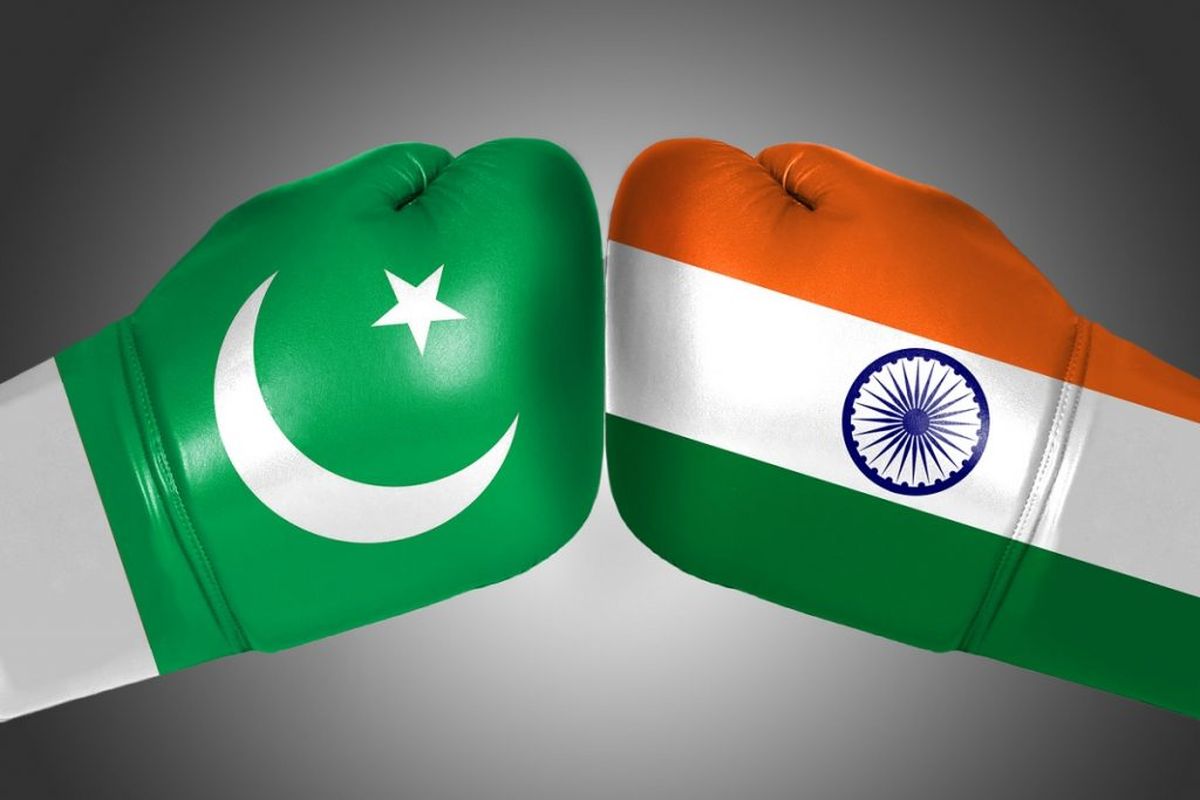One year after the Balakot air strikes when Indian fighter planes penetrated Pakistani air space with a military objective of destroying Jaish-e-Muhammad’s militant camps and in the wake of the latest outrage at Handwara, it is time to revisit India’s coercive diplomacy options.
Balakote was a consequence of much irritation India had been facing with constant targeting of its armed forces by militants funded and harboured by Pakistan. The need for retaliation became inevitable when Jaish-e-Muhammad claimed responsibility for the Pulwama terror attack that left 40 CRPF jawans martyred.
Advertisement
Although the consequence and magnitude of the airstrikes aroused much controversy, they did succeed in mustering international attention, as two nuclear-armed rivals were on the brink of war again. This limited military action of India against Pakistan was a product of its coercive diplomacy strategy.
This is evident with Operation Parakram (after the 2001 parliament attacks) and 2016 surgical strikes (after Uri attacks). Coercive diplomacy according to George Alexander is intimidation of one kind or another to get others to comply with one’s wishes. In India’s context, there is limited use of military force to stop Pakistan from promoting and harbouring cross-border terrorism.
However, this strategy has the potential of escalating into a disastrous full-scale nuclear conflict as seen with unanticipated escalations following the Balakot air strikes. With a need to pressurize Pakistan against further terror sponsorship and avoid a major conflict escalation, India had supplemented this strategy of using limited military action with diplomacy.
India devised its niche strategy against Pakistan’s cross-border terrorism by mounting international pressure through diplomacy. With 9/11, India recognized an opportunity to internationally isolate Pakistan and shed light on its statesponsored terrorism.
As the war on terror commenced, the United States followed by the rest of the West started criticizing their long-time Cold war protégé “Pakistan” for harbouring and promoting terrorism. At the same time, a growing economy and geopolitical positioning of India allowed the West to expand its markets and prevent China’s rise.
This called for closer ties amongst the actors as their political, economic and security interests coincided. This multilateral international pressure on Pakistan forced it to wage a half-hearted war on terror. Overall, this long-term strategy has been serving well by partially limiting Pakistan’s terror funding.
However extreme reliance on foreign policies of other states to achieve one’s aims would be risky in this self-help system, as national interests keep changing and foreign policies are shaped according to interests rather than alliances. India shouldn’t forget that the West used terrorism as a tool to limit USSR’s influence in the region, and if in case their national interests demand them to do the same, India’s strategy would cripple before achieving its objectives. Thus, there is a need for India to find a more self-reliant strategy.
A key target for any coercive diplomatic strategy is to pressurize a state, and in the case of Pakistan, it is their existing weak and fragile economy. However, India’s retaliation has been more militaristic than economic for the lack of economic integration amongst both the countries. But India has adapted short-term strategies targeting Pakistan’s economy, such as scrapping Pakistan’s Most Favourable Nation (MFN) status and imposing naval blockades against Pakistan in times of war.
India’s scrapping of MFN meant that Pakistan would not enjoy a non-discriminatory trading partnership with India. However, considering low volumes of trade between these two countries, this tactic lacks the capability of any severe damage to Pakistan’s economy. Similarly, naval blockades have been a short-term strategy with short-lived economic impacts as they were and can only be used at times of war.
To effectively use coercive diplomacy and target Pakistan’s economy, India should focus on long term strategies and domestic investments rather than shortterm visible benefits. This would equip the former with two efficient coercive diplomatic strategies: water diplomacy and cyber-aggression. India’s geography gives the former an advantage when it comes to water diplomacy.
India uninterruptedly lets Indus, Jhelum and Chenab rivers to flow into Pakistan as per the Indus water treaty of 1960. These rivers are major contributors to Pakistan’s economy and agriculture, a disruption in their supply would severely strangle Pakistan’s economy. However, despite all the hostilities between the two countries, India has not violated the treaty for two reasons, one being the ethical reason of not suffocating civilians and the other being lack of infrastructure.
If India decides to stop Pakistan’s flow of water, it must divert the water with a risk of its cities being flooded. So, to efficiently utilize this tool India must invest in longterm projects such as building reservoirs and dams across the region. Whether this tactic is in fact deployed or not, development of such infrastructure alone would force Pakistan to reconsider its strategy of propagating cross-border terrorism. Another major untapped tool for Indian coercive diplomacy is in cyberspace.
As per MHRD’s All India Survey of Higher Education more than 1.5 million students were enrolled in computer engineering, Information Technology, and computer application related courses for 2018-2019 alone. However, despite the presence of many techies in India, there is no developed cyber strategy, as our educational standards dwindle with low applicability and employability standards.
Thus, there is a strong need for long-term investment in developing India’s education standards, as at least some if not many of these graduates can be vital assets against Pakistan. The tools that cyberspace offers can be put to efficient use to counter cross-border terrorism in more ways than one. Despite the domestic audience’s applause over Balakot airstrikes, it did indicate a shortcoming of India’s coercive diplomacy.
This limited military action, in the long run, cannot pressurise Pakistan to reduce terrorism but rather has the potential to escalate into a full-scale war. India must thus adopt new self-reliant tactics that would force Pakistan to curb statesponsored terrorism without major escalations.
(The writer, a post-graduate from the London School of Economics, comments on foreign policy issues)











